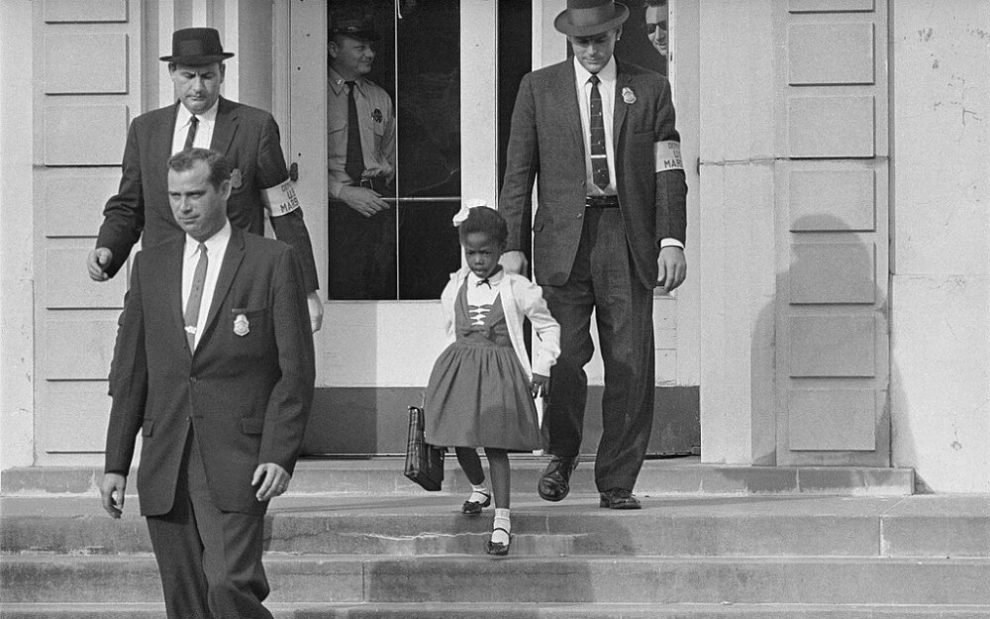In 1964, artist Norman Rockwell, best known for his photorealistic depictions of everyday American life, painted the now-iconic picture of 6-year-old Ruby Bridges on her way to school. Titled The Problem We All Live With, the painting is Rockwell’s witness to the violent reality of racism in the United States. As the first African American student to attend the newly desegregated school system in New Orleans in 1960, Bridges was subjected to an ugly and hysterical outpouring of hate. People threw things at her, and white parents withdrew their children from the school.
Years later, Bridges commended Rockwell for seeing the reality of racism in the U.S. and documenting it. Art and poetry have always had the power to highlight both the ravages of injustice and the heroes of liberation, but not every artist chooses to use their gift in this way.
In his recent collection, White Terror, Black Trauma (Third World Press, 2023), poet Philip C. Kolin has opted, like Rockwell, to use his artistic vision and influence to trace the story of racial violence in the U.S., and the prophetic resistance demonstrated on countless occasions by Black Americans, from the era of slavery to the present. Beginning with the arrival of slave ships bearing kidnapped Africans to Jamestown in 1619 and ending with the brutal murder of Tyre Nichols at the hands of Memphis police, Kolin documents these chapters in a grim history that undermines American claims to moral exceptionalism.
In his ekphrastic poem “Norman Rockwell Captures Black History,” Kolin describes the painter’s depiction of Ruby Bridges’ walk to school: “A smashed tomato misses Ruby as she marches into history.” Today, many of us recognize the painting and know Bridges’ name, while the names of those who taunted and abused her are forgotten. But that doesn’t mean the story ended there. The history she marched into was recent history. Bridges is still alive and will turn 70 this year. She has continued to be an activist for racial justice. How about the people who harassed her? Presumably some of them are still alive. How have they chosen to spend those years? Did they repent and try to do better? Unfortunately, the news headlines of recent years indicate that racism also kept on marching into history.
For those who know the struggle for racial justice only as a few inspiring vignettes, Kolin’s poems can help fill in the educational blanks. Yes, some of the heroes and martyrs who figure in Kolin’s poems are well known to history: Harriet Tubman, Sojourner Truth, Rosa Parks, Malcolm X, Eric Garner. But Kolin writes about figures and episodes in the history of America that may be unknown to white Americans. Some are tragedies and some are triumphs. Many are both.
Writing of the horrific Tuskegee syphilis experiment, in which white physicians injected disease into the bodies of 400 Black men, Kolin draws an apt comparison to the Nazi Dr. Mengele who experimented on imprisoned Jews in concentration camps. Meanwhile, “Tuskegee Airmen flew over / the hospital on their way to defeat America’s enemies, / unaware that their brothers below were being turned / into white scabbed ghosts.”
Other poems document the destruction of Black Wall Street in Tulsa in 1921, the KKK bombing of the 16th Street Baptist Church in Birmingham that killed four Black girls, the murder of Civil Rights workers, the victims of anti-miscegenation laws.
These poems remind us of the creativity and resilience of Black Americans, not only the activists who risked their lives for liberty and justice, but musicians like Billie Holliday and Donna Summer or athletes like Jackie Robinson who broke barriers and challenged social prejudices.
Today white America tends to treat racial injustice as a museum piece, a footnote item that happened in the past. But the past is with us still. Kolin’s previous collection, Emmett Till in Different States: Poems, published in 2015, also by Third World Press, told the story of a violent and tragic episode in U.S. history that continues to be echoed today. Now this latest collection can serve as a poetic timeline for readers who want to learn more about the truth of our past and the responsibilities of our present. Each poem is relatively short, direct, and accessible, and each comes with a short blurb explaining a little about the historical background of the episode depicted. Following the thread of suffering and bravery from 1619 to the present, the reader is reminded that the evil of racial injustice and white supremacy have yet to be exorcised from this culture.
Artists and activists may debate about how best to tell the story of the long struggle for racial justice in this country. But one thing is certain: any artist whose work is intended to tell America’s story has an obligation to be truthful about white America’s original sin, as Rockwell did in his famous painting, and as Kolin has done in this poetry collection.
Image: Ruby Bridges escorted to school by U.S. Marshals. William Frantz Elementary School, New Orleans, 1960. Wikimedia Commons.












Add comment